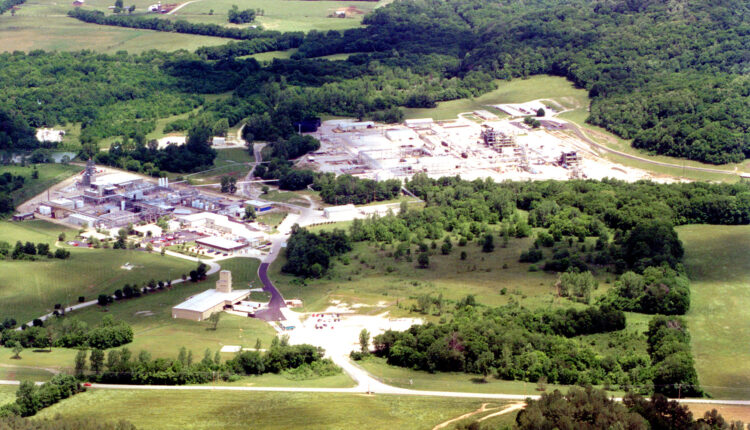Challenges To Clean Energy's Expansion: A Growing Threat

Table of Contents
Intermittency and Grid Integration Challenges
Clean energy sources like solar and wind power offer a promising path towards environmental sustainability. However, their inherent intermittency presents substantial challenges to clean energy's expansion. This variability in energy production, dictated by weather patterns, creates instability within the power grid.
The Reliability Issue
The fluctuating nature of renewable energy necessitates a robust and adaptable grid system. Maintaining a stable electricity supply requires careful balancing between intermittent renewable sources and consistent baseload power.
- Balancing Intermittent Sources: Sophisticated grid management systems are crucial to effectively integrate solar and wind power with traditional baseload power sources like natural gas or nuclear power plants. This ensures a consistent electricity supply even when solar and wind output is low.
- Infrastructure Limitations: Many existing power grids are ill-equipped to handle the influx of renewable energy. Upgrading and expanding grid infrastructure is paramount to manage the flow of this variable energy supply and prevent outages.
- Energy Storage Solutions: Developing and deploying effective energy storage technologies is a critical factor in addressing the intermittency challenge. Batteries, pumped hydro storage, and other advanced storage solutions are essential to store excess energy generated during peak production periods and release it when needed, ensuring a reliable energy supply.
Transmission and Distribution Infrastructure
Clean energy sources are often located remotely, far from population centers where energy demand is highest. This geographical disparity necessitates substantial investment in transmission and distribution infrastructure to facilitate the efficient flow of clean energy.
- Permitting and Environmental Concerns: The construction of new transmission lines often faces significant delays due to complex permitting processes, environmental reviews, and potential community opposition. Streamlining these processes is crucial for faster deployment of renewable energy projects.
- Modernizing Existing Infrastructure: Many existing transmission and distribution networks are aging and inefficient. Modernizing this infrastructure is essential to reduce energy loss during transmission and improve the overall efficiency of the grid.
- Smart Grid Technologies: Smart grid technologies play a vital role in managing the variable energy supply from renewable sources. Smart grids use advanced sensors and data analytics to optimize energy flow, reduce waste, and enhance grid stability.
Economic and Policy Barriers
Despite the environmental benefits, economic realities and policy landscapes pose significant barriers to clean energy's expansion.
High Upfront Costs
The initial investment costs for renewable energy technologies, such as solar panels and wind turbines, can be substantial. This high capital expenditure can be a significant barrier to entry, particularly for individuals and small businesses.
- Government Incentives: Financial support from governments, through subsidies, tax incentives, and grants, can significantly reduce the upfront costs and make clean energy technologies more accessible.
- Falling Costs: The costs of renewable energy technologies have been decreasing steadily, but they still remain a considerable barrier for widespread adoption, especially in developing countries.
- Research and Development: Continued investment in research and development is crucial to further reduce the cost of clean energy technologies, making them more competitive with traditional fossil fuel sources.
Policy Uncertainty and Regulatory Hurdles
Inconsistent government policies and complicated regulatory processes create uncertainty and discourage investment in the clean energy sector. Clear and consistent policy frameworks are essential to attract the necessary investments.
- Stable Policy Frameworks: Long-term, stable, and supportive government policies are necessary to foster investor confidence and encourage the development of clean energy projects.
- Streamlined Regulations: Simplifying and streamlining permitting processes can significantly expedite the development and deployment of clean energy projects, reducing delays and costs.
- International Cooperation: Consistent international standards and regulations are essential to facilitate cross-border investment and collaboration in the clean energy sector.
Resource Availability and Environmental Concerns
While clean energy sources are generally considered environmentally friendly, their large-scale deployment can raise concerns about resource availability and environmental impact.
Land Use and Environmental Impact
The construction of large-scale renewable energy projects, like solar farms and wind farms, can lead to significant land use changes, potentially impacting habitats and altering landscapes.
- Careful Site Selection: Thorough environmental impact assessments and careful site selection are crucial to minimize the negative ecological consequences of renewable energy projects. Prioritizing areas with minimal ecological sensitivity is key.
- Biodiversity Conservation: Balancing energy production with biodiversity conservation is a critical challenge. Strategies that minimize habitat disruption and protect endangered species are necessary.
- Innovative Deployment Strategies: Exploring innovative deployment strategies, such as offshore wind farms and floating solar farms, can reduce land use impacts and minimize conflicts with terrestrial ecosystems.
Rare Earth Minerals and Supply Chains
The manufacturing of certain clean energy technologies, such as wind turbines and solar panels, relies on rare earth minerals. The extraction and processing of these minerals raise concerns about environmental sustainability and supply chain security.
- Sustainable Sourcing: Developing and implementing sustainable and ethically responsible sourcing practices for rare earth minerals is paramount to minimize environmental damage and ensure fair labor practices.
- Material Alternatives: Investing in research and development to identify and utilize alternative materials that can replace rare earth minerals in clean energy technologies is crucial for reducing dependence on these resources.
- Recycling and Reuse: Implementing effective recycling and reuse programs for end-of-life clean energy technologies is essential to minimize waste and conserve valuable resources.
Conclusion
The expansion of clean energy is paramount for mitigating climate change and creating a sustainable future. However, significant challenges related to intermittency, grid integration, economic factors, policy uncertainty, and resource availability hinder its widespread adoption. Overcoming these obstacles requires concerted efforts from governments, industry, and individuals. Addressing these challenges through strategic investments in grid modernization, supportive policies, technological innovation, and sustainable sourcing practices is crucial for accelerating the transition to clean energy and ensuring a cleaner, healthier planet for future generations. Let’s work together to overcome the challenges to clean energy's expansion and build a more sustainable world.

Featured Posts
-
 Agatha Christies Poirot Characters Cases And Critical Analysis
May 20, 2025
Agatha Christies Poirot Characters Cases And Critical Analysis
May 20, 2025 -
 Dealerships Step Up Opposition To Electric Vehicle Regulations
May 20, 2025
Dealerships Step Up Opposition To Electric Vehicle Regulations
May 20, 2025 -
 The Kite Runners Moral Choices In A Nigerian Context A Comparative Analysis
May 20, 2025
The Kite Runners Moral Choices In A Nigerian Context A Comparative Analysis
May 20, 2025 -
 Revealing Paulina Gretzky Hottest Photos And Social Media Moments
May 20, 2025
Revealing Paulina Gretzky Hottest Photos And Social Media Moments
May 20, 2025 -
 Ajatha Krysty Fy Esr Aldhkae Alastnaey Thlyl Jdyd Laemalha
May 20, 2025
Ajatha Krysty Fy Esr Aldhkae Alastnaey Thlyl Jdyd Laemalha
May 20, 2025
